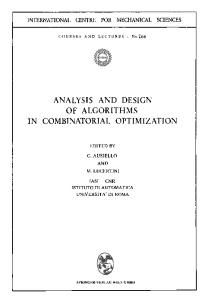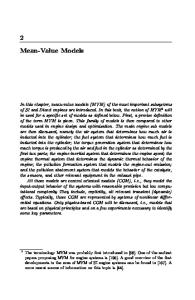Introduction to Aeroacoustics and Self-Sustained Oscillations of Internal Flows
After a review of basic equations of fluid dynamics, the Aeroacoustic analogy of Lighthill is derived. This analogy describes the sound field generated by a complex flow from the point of view of a listener immerged in a uniform stagnant fluid. The concep
- PDF / 1,027,103 Bytes
- 70 Pages / 439.37 x 666.142 pts Page_size
- 8 Downloads / 272 Views
n
Due to the essential non-linearity of the governing equations it is difficult to predict accurately fluid flows under conditions at which they do produce sound. This is typical for high speeds with non-linear inertial terms in the equation of motion much larger than the viscous terms (high Reynolds numbers). Direct simulation of such flows is very difficult. When the flow velocity remains low compared to the speed of sound waves (low Mach numbers) the sound production is a minute fraction of the energy in the flow, R. Camussi (Ed.), Noise Sources in Turbulent Shear Flows: Fundamentals and Applications, CISM International Centre for Mechanical Sciences, DOI 10.1007/978-3-7091-1458-2_1, © CISM, Udine 2013
4
A. Hirschberg
making numerical simulation even more difficult. It is not even obvious how one should define the acoustic field in the presence of flows. Aeroacoustics does provide such definitions. The acoustic field is defined as an extrapolation of an ideal reference flow. The difference between the actual flow and this reference flow is identified as source of sound. Using Lighthill’s terminology, we call this an “analogy” [Lighthill (1952-54)]. In free field conditions the sound intensity produced by flows is usually so small that we can neglect the effect of acoustics on the flow. Furthermore, the listener is usually immerged in a uniform stagnant fluid. In such cases the convenient reference flow is the linear inviscid perturbation of this stagnant, uniform fluid. It is convenient to use an integral formulation of the aero-acoustical analogy. This integral equation is a convolution of the sound source by the Green function: the response of the reference state to a localized impulsive source. The advantage of the integral formulation is that random errors in the source term average out. One therefore often uses such an integral formulation to extract acoustic information from direct numerical simulations of the flow which are too rough to directly predict the acoustic field. Such an approach is used so as to obtain scaling laws for sound production by turbulent flows when only global information is available about the flow. When flow dimensions are small compared to the acoustical wave length (compact flow) we can locally neglect the effect of wave propagation within the source region. Here the analogy of Lighthill provides again a procedure which guarantees that we keep the leading order term where brute force would predict no sound production at all or would dramatically overestimate it [Crighton et al. (1992)]. In compact flows at low Mach numbers the flow is most efficiently described in terms of vortex dynamics, allowing a more detailed study of the sound production by nonlinear convective effects. Walls have a dramatic effect on the production of sound because it becomes much easier compressing the fluid than in free space. In internal flows acoustic energy can accumulate into standing waves, which correspond to resonances. Even at low Mach numbers acoustical particle velocities of the order of magnitude of the main flow velocity can be reach
Data Loading...











